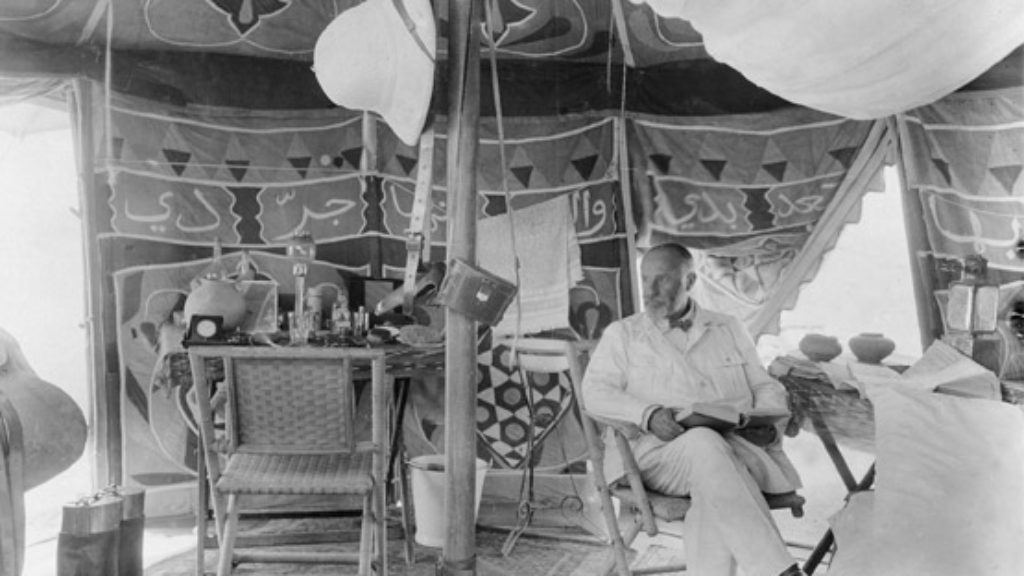A Torah Exchange: Yonatan Adler Responds to Malka Simkovich
Malka Z. Simkovich opened her review of my recent book, The Origins of Judaism: An Archaeological-Historical Reappraisal, by characterizing the argument I made as “quite radical” and “controversial” in that it challenges a common view among scholars who “see signs of Judaism arising centuries earlier, following the Judean return from Babylonian exile.” But my argument is not quite as radical as Simkovich seems to imagine because the question which stands at the center of my book is quite different from the question which interests her. “The aim of the present book,” I write at the outset:
Is to investigate when and how the ancestors of today’s Jews first came to know about the regulations of the Torah, to regard these rules as authoritative law, and to put these laws into actual practice in their daily lives. My interest here is to investigate when and why adherence to the Torah became the way of life of the Jewish population at large: the farmers and the craftsmen, the men, the women, and the children.
As I explain there: “My interest here is decidedly not in the history of ideas or intellectual history, but rather in social history, focused on the behavior of a society at large.” To conduct this investigation, the book takes the first century CE as a benchmark—a time when Torah observance was clearly widespread among ordinary Judeans—and proceeds backwards in time to seek the earliest surviving evidence for widespread observance. In examining one Torah regulation after another, the book shows that the trail of evidence invariably ends around the middle of the second century BCE, during the period of Hasmonean rule over Judea.
Rather than asking when Jews at large began to regard the Torah as authoritative law and to put its rules and regulations into practice, Simkovich’s concern appears to be when certain ideas which appeared as central features of Jewish thought and identity in later centuries were first found among early Jewish writers. Thus, she asks:
But what if Adler had moved forward in time instead of backward? Suppose he had opened his study with an examination of early Second Temple sources and then looked at the development of both ideas and practices as he moved toward the first century CE. Had Adler opened his study by examining evidence from the Second Temple period, he still would not have found compelling evidence for circumcision, kashrut, and Shabbat. But perhaps he would have taken pause to address the many literary references to the Jerusalem Temple, charity, and prayer. He would have had to contend with texts that affirm God’s commitment to the people of Israel. He would have found references to covenant, monotheism, revelation, and the messianic age. Above all, he would have found texts that allude to and interpret scriptural traditions. All of these themes are featured in Judean literature of the Persian era, Jewish literature of the Hellenistic era, and later rabbinic literature. Indeed, they were so important that differences over them eventually led to the separation of Jews into sectarian groups in the early second century BCE.
Simkovich further notes that among the Persian-era and early Hellenistic period literary texts which survive, “many are concerned with the importance of the Torah. The fact that these texts were preserved and transmitted is perhaps of more historical significance than Adler allows.”
All of this is certainly true; “religious” themes of the sort that Simkovich lists undoubtably appear within the writings of Judean (and Israelite) intellectuals living in periods of time considerably earlier than the second century BCE. Scholars of early Judaism have published countless studies tracing the intellectual history of these and other themes from their earliest emergence and onward through time. But none of this has anything to do with the central question upon which my book is focused, namely: when did ordinary Jews begin to keep the rules of the Torah as authoritative law? Simkovich appears dissatisfied with my “privileging the search for practices over the search for ideas.” But that is exactly the entire point of the book! She critiques the book for focusing on concrete practices rather than on conceptual beliefs: “Ideas that developed over time and that united Jews from place to place, however, are of secondary interest.” But it is precisely here that I think she misses the point. Such ideas are not of secondary interest; the book consciously and unambiguously avoids the matter of beliefs entirely!
All of this begs the question of whether practices or beliefs are the more important subject for inquiry in the study of Judaism and its earliest emergence. This might make for an interesting point of debate, but it is not one that I wish to pursue here. Suffice it to say that I regard my book as something of a corrective to the general tendency within scholarship on Second Temple period Judaism to privilege the study of ideas as conceived and recorded by ancient Jewish literati over concrete practices found among the ancient Jewish masses. It is true that my book asks a very different question from the kinds of questions posed previously by others, but this should hardly be held against it.
It is my sincere hope that my book will ignite more widespread interest into Torah observance as practiced among ordinary Jews in antiquity. Archaeology, along with ancient texts, provides an extraordinarily valuable window onto this often-neglected field of research. Future progress on this front promises to shed light well beyond the mental constructs of a miniscule number of ancient Jewish intellectuals whose writings have survived, illuminating instead the day-to-day lives and culture of the masses who constituted the remaining 99.99% of contemporary Jewish society. If this goal is “radical” or “controversial” . . . then so be it!
Suggested Reading
A Normal Israel?
Zionism has long based its claim to sovereignty on the universal right to national self-determination, and the phrase “like all other nations” has been incorporated into Israel’s Declaration of Independence, yet the goal of “normalization” has proven to be much more complicated than most early Zionists had thought.

Religion and Power
Rabbi Sacks, who is in the end an optimistic thinker, sees a process of internecine violence leading to religious moderation happening within Islam now.

Islamic Jihad, Zionism, and Espionage in the Great War
A century ago, the Holy Land seems to have been full of European adventurers, archaeologists, would-be diplomats, and spies—sometimes all combined in the same person. Take, for instance, Max von Oppenheim . . .
Necessary Power: A Rejoinder to Jonathan Sacks
When Rabbi Sacks writes, “It is not our task” (and it was not Abraham’s task) “to conquer or convert the world or to enforce uniformity of belief. It is our task to be a blessing to the world. The use of religion for political ends is not righteousness but idolatry,” it seems to me that he oversimplifies matters.
Comments
You must log in to comment Log In